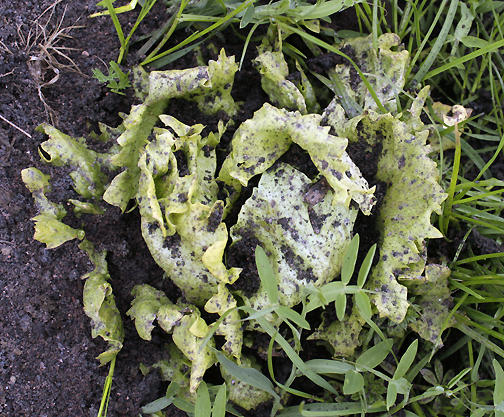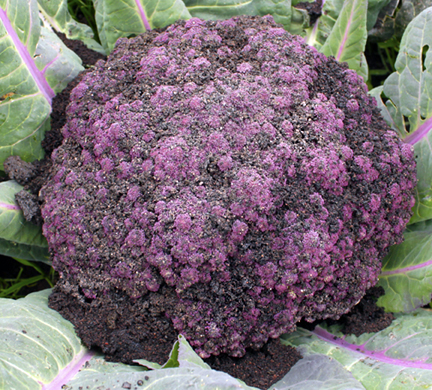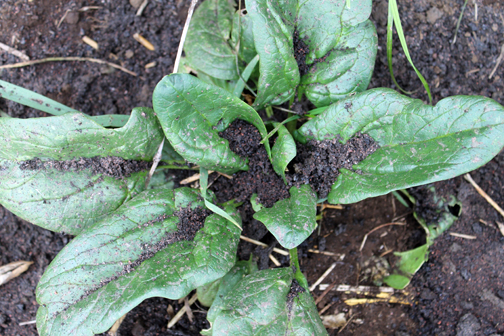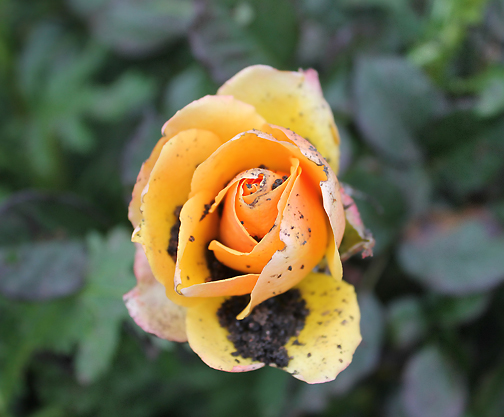It looks like you're using an Ad Blocker.
Please white-list or disable AboveTopSecret.com in your ad-blocking tool.
Thank you.
Some features of ATS will be disabled while you continue to use an ad-blocker.
share:
reply to post by Aleister
Thanks for the questions - It’s keeping me busy while I’m a little ragged. She’s still erupting and making a lot a noise and I can’t see her. Fret fret...
Back on questions!
Some of the ash ‘lulls’ but the ‘chunks’? Though they are light - they fall fast and HARD! It really hurts to get caught in it.
And yes, the towns have sirens but in 15 years and some pretty outrageous eruptions I’ve never heard one.
I’m sure (or I’d like to think so) if the flow was going to change in this direction they’d let us know - but - this is Sicily. Things don’t always ‘work right’ here.
peace
Is the falling ash constant, or does it lull (with the wind direction, the extent of the current plume) and then pick up again when an "event" occurs. And does the town have a warning siren that goes off if there is a huge blast? Thanks again.
Thanks for the questions - It’s keeping me busy while I’m a little ragged. She’s still erupting and making a lot a noise and I can’t see her. Fret fret...
Back on questions!
Some of the ash ‘lulls’ but the ‘chunks’? Though they are light - they fall fast and HARD! It really hurts to get caught in it.
And yes, the towns have sirens but in 15 years and some pretty outrageous eruptions I’ve never heard one.
I’m sure (or I’d like to think so) if the flow was going to change in this direction they’d let us know - but - this is Sicily. Things don’t always ‘work right’ here.
peace
Hi Silo
Guess who posted on the wrong thread this morning Posted on the old Eta thread. Never mind on the correct one now.
Keep well and safe. I am talking to Turi at the moment. Data unavailable at this minute.
Guess who posted on the wrong thread this morning Posted on the old Eta thread. Never mind on the correct one now.
Keep well and safe. I am talking to Turi at the moment. Data unavailable at this minute.
reply to post by silo13
Awe..Silo, please be careful! Wish it was a bit clearer for you to be able to see.. Lots of luck, keep us updated as often as possible!
Awe..Silo, please be careful! Wish it was a bit clearer for you to be able to see.. Lots of luck, keep us updated as often as possible!
She's coming down from it again now. This is 3 in the last 36 hours.
reply to post by silo13
Per la mia terra:
"Tutto ciò che la natura ha di grande,
tutto ciò che ha di piacevole,
tutto ciò che ha di terribile,
si può paragonare all'Etna
e l'Etna non si può paragonare a nulla"
(D. Vivant Denon “Voyage en Sicile”)
Per la mia terra:
"Tutto ciò che la natura ha di grande,
tutto ciò che ha di piacevole,
tutto ciò che ha di terribile,
si può paragonare all'Etna
e l'Etna non si può paragonare a nulla"
(D. Vivant Denon “Voyage en Sicile”)
reply to post by Tzavros
It's been really bad the last couple of hours - really loud.
No ash falling this way - but who knows with the cloud cover. She sure has been vocal though - bad.
I've not seen anything on web cams it's cloudy everywhere.
It's wait and see!
Thanks again - glad you're here - it's not 'home' without you!
peace
It's been really bad the last couple of hours - really loud.
No ash falling this way - but who knows with the cloud cover. She sure has been vocal though - bad.
I've not seen anything on web cams it's cloudy everywhere.
It's wait and see!
Thanks again - glad you're here - it's not 'home' without you!
peace
webcams.volcanodiscovery.com...
here you can see it a bit more clearly, it's updated every 15 secs I think.
the ash cloud seem to be huge
here you can see it a bit more clearly, it's updated every 15 secs I think.
the ash cloud seem to be huge
edit on 20-2-2013 by citizenoftheworld because: (no reason given)
reply to post by silo13
Well I was just silly posting on a old thread I am always lurking around. Spoken to Turi and the others. She is being very naughty at the moment and needs watching for a while. This time it looks spectacular but only a big show which is a relief. She will continue to smoke for a while though.
Well I was just silly posting on a old thread I am always lurking around. Spoken to Turi and the others. She is being very naughty at the moment and needs watching for a while. This time it looks spectacular but only a big show which is a relief. She will continue to smoke for a while though.
For those asking about 'damage' from Etna's ash?
Here's some...
As you can see some of the tender leafed vegetables are already yellow and wilted just from having the ash on the leaves for a day.
lettuce

cauliflower

spinach

'grace' rose

peace
Here's some...
As you can see some of the tender leafed vegetables are already yellow and wilted just from having the ash on the leaves for a day.
lettuce

cauliflower

spinach

'grace' rose

peace
edit on 20-2-2013 by silo13 because: pic fix
reply to post by Tzavros
Understatement! LOL!
She is calming down though now. I hope it will clear up a bit for more pictures.
Before I forget - what's the link you use showing the earth shake activity graph? I had the link and somehow went fumble fingers cut pasting it and it didn't work. My bad not yours!
Thanks for keeping your ear to the ground for us!
peace
She is being very naughty at the moment -
Understatement! LOL!
She is calming down though now. I hope it will clear up a bit for more pictures.
Before I forget - what's the link you use showing the earth shake activity graph? I had the link and somehow went fumble fingers cut pasting it and it didn't work. My bad not yours!
Thanks for keeping your ear to the ground for us!
peace
Here are some images from the last hour including lava
www.etnawalk.it...
looks pretty spectacular.
www.etnawalk.it...
looks pretty spectacular.
edit on 20-2-2013 by citizenoftheworld because: (no reason given)
Originally posted by silo13
For those asking about 'damage' from Etna's ash?
Here's some...
As you can see some of the tender leafed vegetables are already yellow and wilted just from having the ash on the leaves for a day.
lettuce
cauliflower
Thank you for the photos.
How high is the ash cloud?
At the moment, there is going to be an EAST wind and I'm living in France so we might get some effects here. Also, with recent volcanic activity over the past 5 or 6 years, we are now getting much more cloud cover and colder winters, plus cool damp summers. Readers should check out "1816 - the year without a summer' : that was caused by a volcanic eruption, albeit a small one.
spinach
'grace' rose
peaceedit on 20-2-2013 by silo13 because: pic fix
I hope she stays calm! It's amazing you've been so calm!
That photograph of the rose is particularly beautiful. I bet the spinach is still edible- it's such a tough plant!
That photograph of the rose is particularly beautiful. I bet the spinach is still edible- it's such a tough plant!
So pretty much if this thing blows, it's lights out for planet earth for at least a few years, right?
Etna is not the supervolcano in the area, your thinking of another volcano.
Originally posted by silo13
So you can grow stuff all the year huh? It's not that bad.
It's February and there's nothing but dead snow around me.
I can imagine me in such groovy conditions. No wonder people can't help to live there.
Great stuff!!
Can you make a video? You say it's very loud and quite frankly I'm curious what that sounds like.
Can you make a video? You say it's very loud and quite frankly I'm curious what that sounds like.
Mount Etna's Dramatic New Eruption
Nice article and video at the above link.
Nice blurb that.
I'll see if I can get the video from Dorschfeldt to post.
peace
Discovery
Italy's Mount Etna sent lava and gas shooting toward the stars early this morning (Feb. 19), the first big eruption for the volcano in 2013.
Nice article and video at the above link.
Mount Etna, one of the world's most active volcanoes, had emitted signs of an imminent paroxysm in recent weeks. On Jan. 22, lava and strong flashes in the volcano's New Southeast Crater were clearly visible from the Sicilian foothills; these often herald a new paroxysm: short, violent eruptive bursts.
Nice blurb that.
Dorschfeldt said he knew Mount Etna's recent signals could precede new activity. "[I've] followed the activity of Etna for many years, and with time you learn to know it as if it were your friend," he said in an email interview. "Following it constantly learn to be a keen observer and a minor change can lead to something important," he told OurAmazingPlanet.
I'll see if I can get the video from Dorschfeldt to post.
The tallest volcano in Europe, Mount Etna is almost constantly spewing gas or lava. Its Bocca Nuova crater also erupted earlier this year, from Jan. 10 to Jan. 20. In 2011, Etna's violent bursts were spotted from space.
peace
edit on 21-2-2013 by silo13 because: bbc
reply to post by Razziazoid
I did take a video of the 'sound' - but I didn't post it (or upload it to You Tube) because there was nothing to see! All gray clouds - but a lot of sound.
I'll upload it anyway and post it.
peace
Can you make a video? You say it's very loud and quite frankly I'm curious what that sounds like.
I did take a video of the 'sound' - but I didn't post it (or upload it to You Tube) because there was nothing to see! All gray clouds - but a lot of sound.
I'll upload it anyway and post it.
peace
new topics
-
Biden Face Planted Somewhere
Other Current Events: 48 minutes ago -
A great artist and storyteller, for kids of all ages
General Entertainment: 1 hours ago -
What Is 'Quad Demic'? Mask Mandate Returns In These US States
Diseases and Pandemics: 5 hours ago -
The Future of fashion .
Social Issues and Civil Unrest: 5 hours ago -
Bin Cyber Junk…
Short Stories: 6 hours ago -
The Undertones - Teenage Kicks
Music: 7 hours ago -
Volcano Watch 2025
Fragile Earth: 7 hours ago
top topics
-
What Is 'Quad Demic'? Mask Mandate Returns In These US States
Diseases and Pandemics: 5 hours ago, 8 flags -
The Future of fashion .
Social Issues and Civil Unrest: 5 hours ago, 6 flags -
Judge rules president-elect Donald Trump must be sentenced in 'hush money' trial
US Political Madness: 15 hours ago, 5 flags -
Volcano Watch 2025
Fragile Earth: 7 hours ago, 5 flags -
Bin Cyber Junk…
Short Stories: 6 hours ago, 5 flags -
Biden Face Planted Somewhere
Other Current Events: 48 minutes ago, 3 flags -
Farmers wife
Music: 17 hours ago, 2 flags -
The Undertones - Teenage Kicks
Music: 7 hours ago, 2 flags -
A great artist and storyteller, for kids of all ages
General Entertainment: 1 hours ago, 2 flags
active topics
-
NJ Drones tied to Tesla explosion at Trump Las vegas
General Conspiracies • 43 • : Flyingclaydisk -
What Is 'Quad Demic'? Mask Mandate Returns In These US States
Diseases and Pandemics • 21 • : underpass61 -
-@TH3WH17ERABB17- -Q- ---TIME TO SHOW THE WORLD--- -Part- --44--
Dissecting Disinformation • 3929 • : Thoughtful3 -
The Undertones - Teenage Kicks
Music • 2 • : underpass61 -
Biden Face Planted Somewhere
Other Current Events • 4 • : WeMustCare -
Russia Ukraine Update Thread - part 3
World War Three • 6900 • : Arbitrageur -
Vehicle Strikes people in New Orleans
Mainstream News • 296 • : BeyondKnowledge3 -
Bin Cyber Junk…
Short Stories • 4 • : JJproductions -
Tesla Cybertruck Explodes in Front of Trump Hotel in Las Vegas
Mainstream News • 217 • : cherokeetroy -
The Future of fashion .
Social Issues and Civil Unrest • 15 • : BernnieJGato
